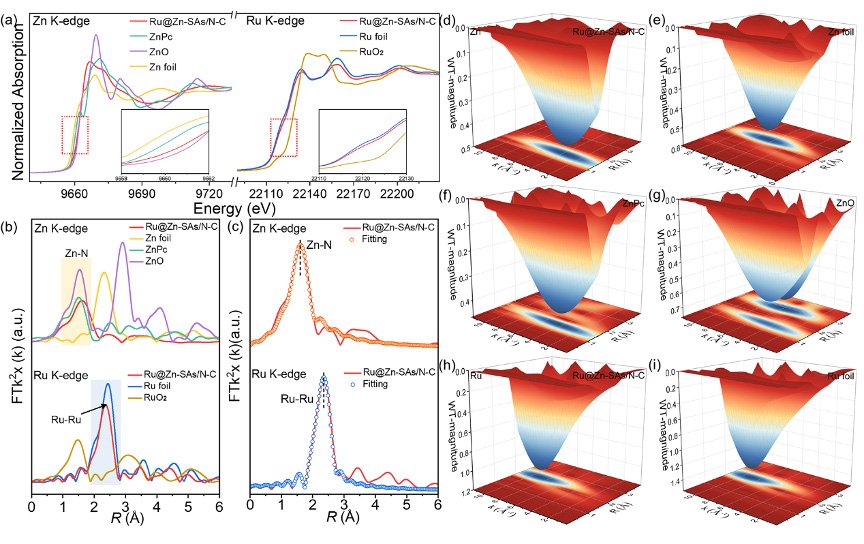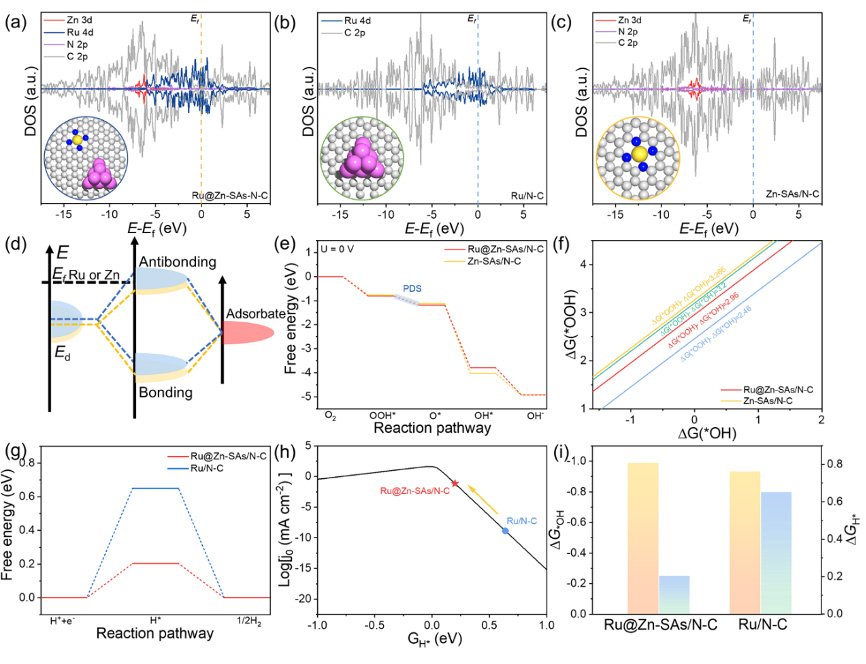As the world moves toward sustainable energy, hydrogen will likely play an invaluable role as a clean and versatile fuel. Yet, adoption of hydrogen technologies hinges on overcoming key challenges in electrocatalysis, where costly and scarce platinum-group metals have long been the industry standard. Taking one step to rectify this, a research team has now developed a new strategy that fine-tunes electronic interactions at the atomic level.
The study introduces an innovative electronic fine-tuning (EFT) approach to enhance the interactions between zinc (Zn) and ruthenium (Ru) species, resulting in a highly active and stable catalyst for both the oxygen reduction reaction (ORR) and hydrogen evolution reaction (HER). By anchoring Ru clusters onto hierarchically layered Zn-N-C nanosheets (denoted as Ru@Zn-SAs/N-C), the team has designed a material that outperforms commercial platinum-based catalysts.
"Our work demonstrates how precise control over electronic structures can fundamentally reshape catalytic performance," says Hao Li, associate professor at Tohoku University's Advanced Institute for Materials Research (WPI-AIMR) and corresponding author of the paper. "By leveraging the synergy between Zn and Ru, we have developed a cost-effective alternative to conventional platinum catalysts, offering new possibilities for sustainable hydrogen production."
Key to this breakthrough is the strong electronic metal-support interaction (EMSI) between Zn and Ru, which optimizes the adsorption energy of critical reaction intermediates. X-ray absorption spectroscopy and computational modeling confirm that this synergy shifts *OOH and *OH adsorption energies to an optimal balance, enhancing ORR efficiency. Simultaneously, Ru sites achieve near-ideal hydrogen binding free energy, placing the catalyst at the peak of theoretical HER activity.
"This research is not just about replacing platinum," Li explains. "It's about understanding how electronic properties at the atomic level dictate catalytic efficiency. That knowledge allows us to design better, more accessible materials for real-world applications."
These findings have significant implications for the affordability and scalability of hydrogen energy. By reducing dependence on expensive platinum while improving performance, this research contributes to the development of cost-effective hydrogen fuel cells, water electrolysis systems, and sustainable industrial processes.

Looking ahead, the team plans to further refine the EFT strategy, improve catalyst stability under real-world conditions, and develop scalable production methods. Applications in zinc-air batteries, fuel cells, and carbon and nitrogen reduction reactions are also under investigation.
The research has been made available through the Digital Catalysis Platform (DigCat), the largest experimental catalysis database to date, developed by the Hao Li Lab.
Details of its findings were published in the journal Advanced Functional Materials. The article processing charge (APC) was supported by the Tohoku University Support Program.

- Publication Details:
Title: Synergistic Effects of Ruthenium and Zinc Active Sites Fine Tune the Electronic Structures of Augmented Electrocatalysis
Authors: Tingyu Lu, Jing Li, Jingwen Ying, Ningkang Peng, Linda Zhang, Yizhou Zhang, Di Zhang, Songbo Ye, Lin Xu, Dongmei Sun, Hao Li, Yanhui Gu, Yawen Tang
Journal: Advanced Functional Materials






